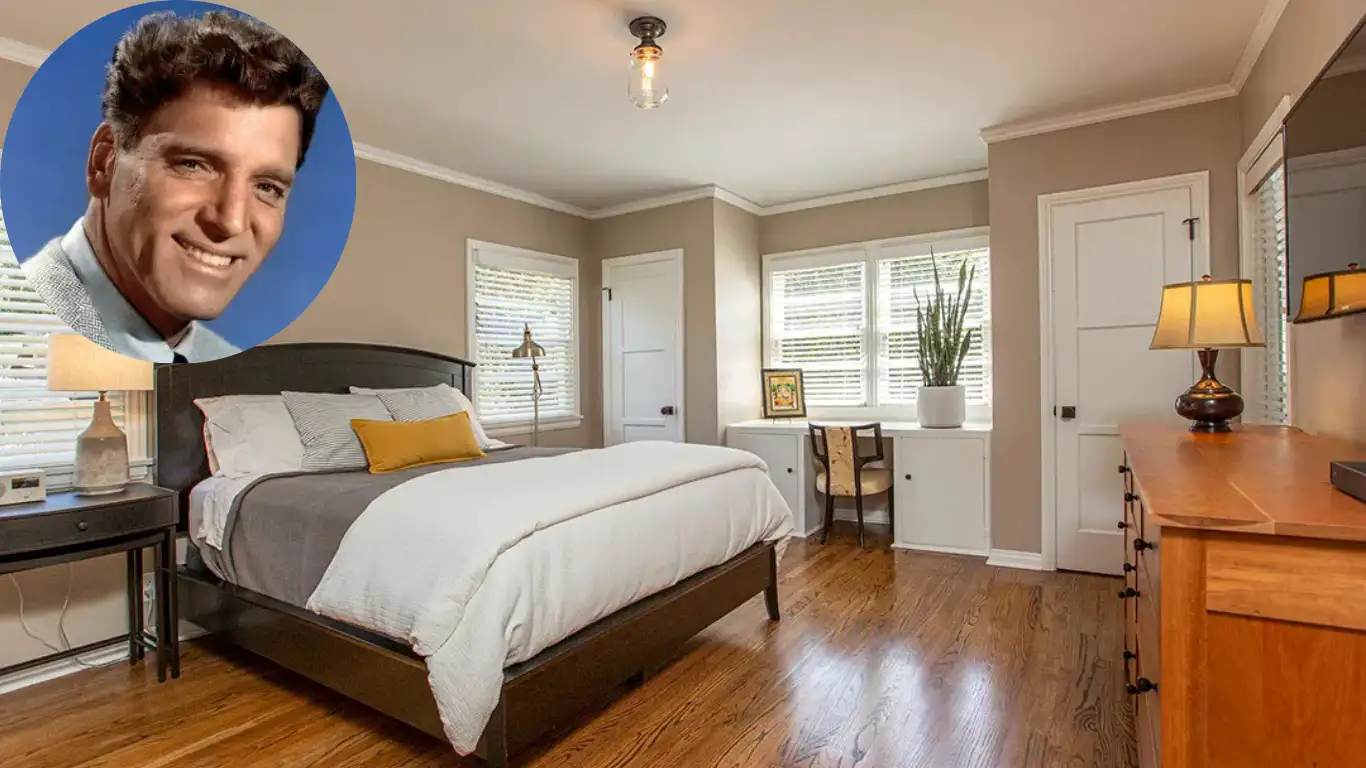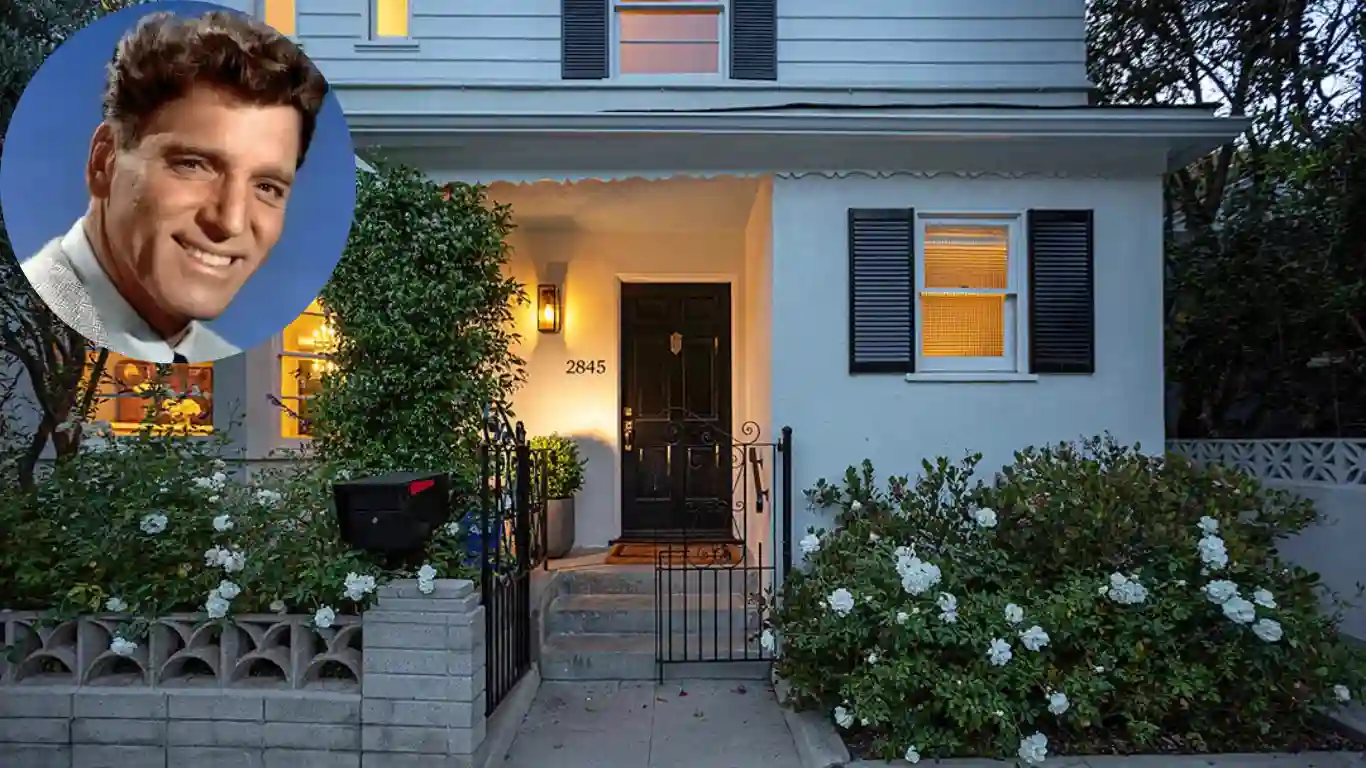Palm Springs, a desert oasis celebrated for its striking mid-century modern homes and Hollywood history, has traditionally been a playground for the rich and famous. The Burt Lancaster House, with its rich history, architectural importance, and cultural significance, is one among the host of iconic celebrity homes nestled throughout this glamorous city. There is an undeniable allure to celebrity homes in Palm Springs. These homes offer a rare combination of privacy, luxury, and architectural innovation, making them significant in the context of the city’s history. One such property is the Burt Lancaster House, a classic example of mid-century modern design and Hollywood glamour deeply intertwined with the golden era of film.
Burt Lancaster: The Man and His Palm Springs Connection

Hollywood legend Burt Lancaster was more than a movie star; he was a towering figure in the golden age of American cinema. Known for standout performances in classics such as Elmer Gantry, From Here to Eternity, and The Birdman of Alcatraz, Lancaster’s charismatic presence and athletic persona made him a Hollywood heavyweight. Beyond acting, he was a civil rights advocate, producer, and pioneer within the film industry. Like many stars of his time, Lancaster was drawn to Palm Springs for its private opulence and serene desert charm. The city became a refuge for Hollywood’s elite seeking respite from the pressures of Los Angeles life. With its warm climate, expansive desert landscapes, and discreet luxury, Palm Springs was a natural choice for Lancaster’s retreat and creative sanctuary. Though exact details of the Burt Lancaster House’s specific address in Palm Springs remain elusive, the home design is known to be located in the exclusive Old Las Palmas neighborhood, a favored area among stars like Kirk Douglas.
Architectural Legacy of the Burt Lancaster House

The Burt Lancaster House embodies the essence of mid-century modern architecture, a design movement blossoming in Palm Springs between the 1940s and 1960s. Characterized by minimalist lines, open floor plans, and integration with the natural environment, the house likely features:
- Expansive floor-to-ceiling windows offering sweeping views of the desert landscape.
- Flat or low-pitched house roofs typical of mid-century modern aesthetics.
- Use of natural materials such as wood and stone to blend indoor and outdoor spaces.
- A seamless flow between living areas and nature, enhancing the sense of openness.
The house’s layout probably includes a resort-style pool and lush gardens, emphasizing leisure and connection to the desert surroundings, reflecting both the architectural trends and Lancaster’s personal taste for relaxed luxury.
Interior Design

Though the original architect’s identity is unclear, the design aligns with a broader architectural movement strongly represented in Palm Springs during that era. Over time, renovations have updated the interior to modern standards while preserving the home’s mid-century charm and cultural heritage.
Hollywood’s Golden Age and Cultural Significance
The Burt Lancaster House was more than just a residence; it was part of the social and cultural fabric of Hollywood’s golden age. Homes like Lancaster’s served as gathering spots for stars, artists, and producers, fostering creative collaborations and lavish parties that defined the era. Situated in Old Las Palmas, the house shares its neighborhood with real estates of other celebrities such as Kirk Douglas and Lucille Ball, anchoring Palm Springs as a legendary celebrity retreat. This neighborhood’s nostalgic atmosphere offers a window into a time when Hollywood’s elite sought solace in the desert’s tranquility. Beyond Old Las Palmas, the nearby Movie Colony neighborhood also played a significant role as a celebrity hideaway, with many stars seeking its seclusion and inspiration.
Burt Lancaster House Today

The Burt Lancaster House remains a private residence with limited public access; however, it is recognized as an important historical and architectural landmark within Palm Springs. The home’s legacy continues through occasional mentions in guided tours focused on the city’s Hollywood history and celebrity estates. Interestingly, the house was used as accommodation for the band Collective Soul during their album recording in January 2022, highlighting its ongoing connection to stars and artists.
The Allure of Celebrity Homes in Palm Springs
Palm Springs is dotted with several other famous celebrity homes, each telling its own story of glamour and Hollywood history:
| Celebrity Home | Notable Features | Current Status |
|---|---|---|
| Frank Sinatra’s Twin Palms | Piano-shaped pool, recording studio | Private tours |
| Elvis Presley’s Hideaway | Mid-century modern design, secluded | Private residence |
| Burt Lancaster’s House | Mid-century modern charm, gardens | Private residence |
Preserving such properties is vital to maintaining Palm Springs’ character and historical significance, as these homes symbolize the city’s unique blend of architecture, culture, and celebrity lifestyle.
Visiting Palm Springs and the Burt Lancaster House

While the Burt Lancaster House features itself is not open to the public, visitors can explore the broader celebrity home scene in Palm Springs through guided tours or self-guided excursions, soaking in the mid-century modern architecture and the stories behind these iconic estates.
Recommended visiting tips include:
- Planning visits between October and April when the weather is pleasantly cool.
- Exploring nearby attractions such as the Palm Springs Art Museum, the Palm Springs Aerial Tramway, and vibrant downtown areas.
- Booking celebrity home tours to gain in-depth insight into the architecture and history of these famous residences.
This expanded version enhances the article’s depth by weaving in Burt Lancaster’s biography, architectural context, cultural significance, information on renovations and current status, and practical visiting advice for readers interested in Palm Springs and its celebrity heritage. It also situates the house within the constellation of other notable modren homes, emphasizing the city’s enduring allure as a Hollywood retreat.
Where does Burt Lancaster currently live?
Burt Lancaster passed away on October 20, 1994, in Century City, Los Angeles, California. Therefore, he does not currently live anywhere. His former family home style, a four-bedroom, four-bath residence located in Beachwood Canyon, Los Angeles, is currently listed for sale and was last owned by a designer. This home was built in 1941 and has historical significance as Lancaster’s former residence, but it is not his current home since he is deceased.

